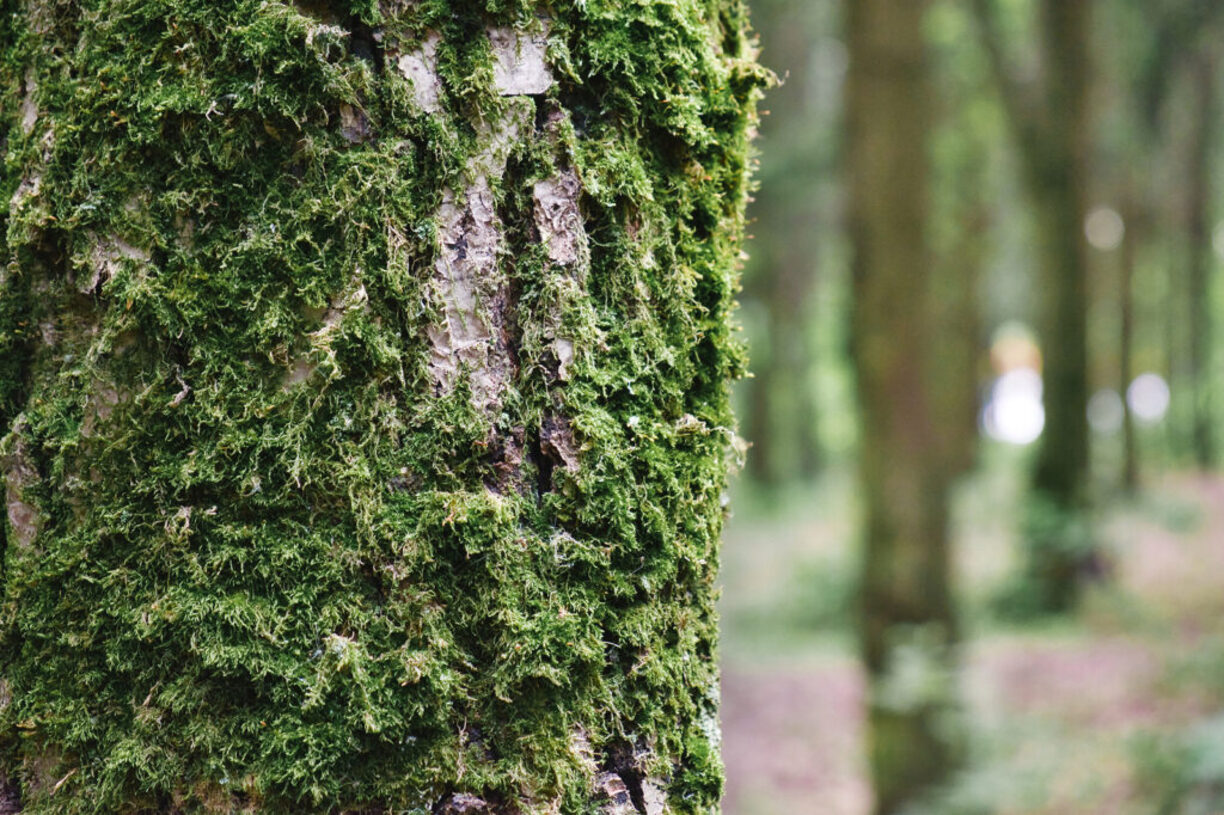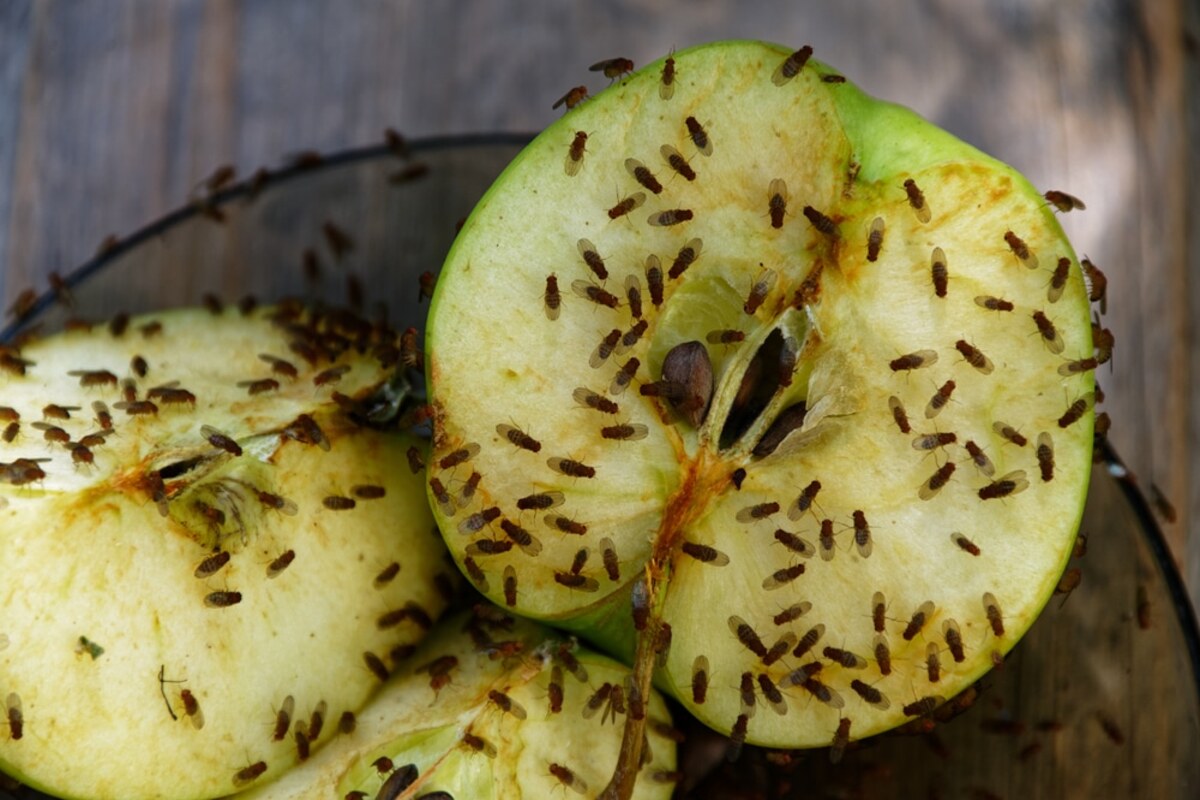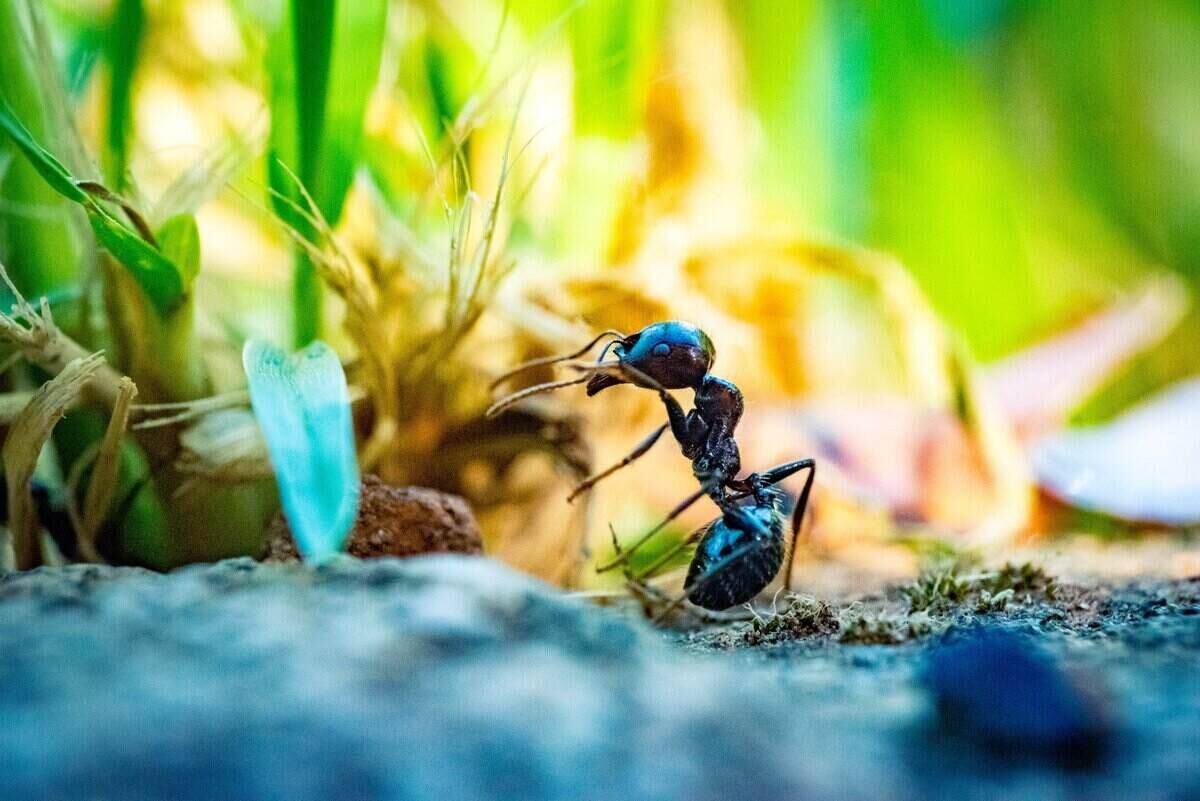Home>Gardening Tips and Tricks>Problem Solving>How To Get Rid Of Moss On Trees


Problem Solving
How To Get Rid Of Moss On Trees
Published: November 12, 2023
Learn effective problem-solving techniques to eliminate moss on trees and restore their health. Discover expert tips and methods to get rid of moss for good.
(Many of the links in this article redirect to a specific reviewed product. Your purchase of these products through affiliate links helps to generate commission for Chicagolandgardening.com, at no extra cost. Learn more)
Table of Contents
Introduction
Welcome to our comprehensive guide on how to get rid of moss on trees. Moss can be a common sight on trees, especially in shady and moist environments. While some people may find the presence of moss on trees to add a certain charm and aesthetic appeal, it can actually have negative effects on the overall health and vitality of the tree if left unchecked.
In this article, we will delve into the causes and impact of moss on trees, as well as various methods to remove it and prevent its regrowth. Whether you are a homeowner with a moss-covered tree in your garden or a professional landscaper dealing with moss issues on a larger scale, this guide aims to equip you with the knowledge and strategies to effectively deal with this problem.
Before we dive into the practical solutions, it is important to understand the nature of moss on trees and why it tends to thrive in certain conditions. By understanding its growth patterns and impact, we can better determine the most effective methods to combat it.
So, if you’re ready to learn how to bid farewell to moss on trees and restore their health and vitality, let’s get started!
Understanding Moss on Trees
Moss is a non-vascular plant that belongs to the Bryophyte family. It thrives in damp and shaded areas, making trees an ideal habitat for its growth. Mosses reproduce through spores and require moisture to survive and spread. While moss itself does not harm trees directly, it can have indirect negative effects on their overall health.
One of the main reasons moss thrives on trees is due to the lack of sunlight reaching the tree’s surface. Overshadowing from nearby buildings, tall vegetation, or the tree’s own dense canopy can create a cool and moist environment that mosses love. Additionally, poor air circulation and high humidity levels contribute to the growth of moss on trees.
The presence of moss on tree bark can lead to several issues. First, moss can create a layer of insulation, trapping moisture and preventing the bark from drying out. This prolonged moisture exposure can lead to the decay of the tree’s bark and underlying tissues, making it more susceptible to diseases and insect infestations.
Furthermore, moss can interfere with the tree’s ability to photosynthesize and produce energy. Moss can form a dense mat-like structure that blocks sunlight from reaching the tree’s leaves, impeding its ability to convert sunlight into nutrients through photosynthesis. Over time, this can weaken the tree and hinder its growth and development.
It is important to note that not all moss on trees is harmful or indicates a problem. In some cases, moss can be a natural part of a tree’s ecosystem and has a symbiotic relationship with the tree. Certain tree species, such as certain types of oak and pine, have a natural affinity for hosting mosses without any negative impact on their health. However, if the moss growth becomes excessive or starts to negatively affect the tree, action should be taken to manage the situation.
Now that we have a better understanding of the nature of moss on trees and its potential consequences, let’s move on to the next section, where we will explore ways to assess the health of trees with moss and determine the best course of action.
Causes and Impact of Moss on Trees
Moss on trees can be caused by a combination of factors, primarily related to environmental conditions and tree health. Understanding the causes and impact of moss growth on trees is essential in developing effective strategies to address the issue.
One of the primary reasons for moss growth on trees is excessive moisture. Areas with high rainfall, poor drainage, or constant shade provide the perfect conditions for moss to thrive. When these conditions persist, moisture accumulates on the tree’s surface, creating a favorable environment for moss spores to germinate and grow.
Another factor that contributes to moss growth is poor tree health. Trees that are stressed or weakened due to factors such as improper pruning, lack of nutrients, or disease susceptibility are more susceptible to moss growth. The presence of moss on a tree can be an indicator of an underlying issue, signaling that the tree is not in an optimal state of health.
The impact of moss on trees can be significant. As moss grows and spreads across the tree’s bark, it can inhibit the tree’s ability to breathe. Moss-covered bark restricts the exchange of gases between the tree and its environment, potentially leading to oxygen deprivation, which is detrimental to the tree’s physiological processes.
Moss can also cause structural damage to a tree. The dense mat of moss can act as a sponge, holding onto moisture and preventing the tree’s bark from drying out. This prolonged moisture exposure can weaken the tree’s structural integrity, making it more susceptible to breakage or falling during extreme weather conditions.
Furthermore, as moss spreads and accumulates, it can create a barrier between the tree’s bark and the surrounding air. This barrier prevents air circulation and traps moisture against the tree’s surface, creating an environment that promotes the growth of bacteria, fungi, and other pathogens. These pathogens can further damage the tree, leading to decay and rot.
In summary, the causes of moss growth on trees include excessive moisture and poor tree health. The impact of moss on trees can obstruct the tree’s ability to breathe, weaken its structure, and increase the risk of pathogen infestation. Addressing underlying issues and implementing effective moss removal strategies is crucial to mitigate these negative effects and improve the overall health of the tree.
Assessing the Health of Trees with Moss
When confronted with moss growth on trees, it is vital to assess the overall health of the tree before taking any action. Evaluating the tree’s health will help determine if the moss is indicative of an underlying problem that needs to be addressed.
Start by examining the tree’s foliage. Are the leaves green and vibrant, or do they appear discolored, wilted, or sparse? Healthy foliage is a good indicator of a tree’s overall vitality. If the tree has poor foliage health, it may indicate that the moss growth is a symptom of an underlying issue, such as nutrient deficiencies or disease.
Next, inspect the tree’s bark. Is the bark intact and firm, or does it show signs of damage, decay, or rot? A healthy tree will have smooth and intact bark. If the moss growth is accompanied by bark damage or decay, it suggests that the tree’s structural integrity may be compromised, and appropriate action should be taken to address the issue.
Consider the tree’s growth patterns. Is it growing vigorously, or does it exhibit stunted growth or dieback? Vigorous growth is an indication of a healthy tree. If the tree shows signs of slow growth, reduced foliage density, or branches dying off, it may be a sign of an underlying problem, such as poor soil conditions or root damage.
Furthermore, assess the tree’s ability to withstand environmental stressors. Can it tolerate drought conditions, extreme temperatures, or wind exposure? Trees with robust health should be able to handle environmental stressors well. If the tree is struggling to withstand such challenges, it may be more susceptible to moss growth and other issues.
Lastly, consider the tree’s adaptability to its surroundings. Is it well-suited to the soil type, light conditions, and climate in its environment? Trees that are well-adapted to their surroundings are more likely to thrive and resist moss growth. If the tree seems ill-suited to its environment, it may require additional care and attention to support its overall health.
By carefully assessing the health of the tree, you can gain valuable insights into the underlying causes of moss growth. This information will guide you in determining the best course of action, whether it involves implementing measures to remove the moss or addressing the underlying health issues of the tree.
Now that we have assessed the health of the tree, let’s move on to explore various natural and chemical methods to remove moss from trees.
Natural Methods to Remove Moss from Trees
When it comes to removing moss from trees, several natural methods can be effective without causing harm to the tree or the surrounding environment. These methods involve utilizing natural ingredients and making slight adjustments to the tree’s environment to discourage moss growth.
1. Physical Removal: The least invasive method is to manually remove the moss from the tree bark. Gently scrub the affected areas using a soft brush or sponge, taking care not to damage the tree’s bark. Be sure to remove all traces of moss, including any loose debris and spores.
2. Improve Air Circulation: Moss thrives in areas with poor air circulation. Trimming nearby vegetation or thinning the tree’s canopy can help increase air movement around the tree, creating a less favorable environment for moss growth.
3. Increase Sunlight Exposure: Moss prefers shaded areas, so pruning any overhanging branches or nearby trees can allow more sunlight to reach the affected tree. This helps to dry out the bark and create an environment less conducive for moss growth.
4. Adjust Soil Moisture Levels: If the tree is in an area with consistently high moisture levels, improving drainage can help reduce moss growth. Ensure proper soil drainage by incorporating organic matter into the soil or creating small trenches to redirect excess water away from the tree.
5. Use Acidic Solutions: Moss prefers alkaline environments, so applying an acidic solution to the affected areas can help remove moss. Dilute vinegar or lemon juice in water and spray it onto the moss-covered bark. Allow the solution to sit for a few minutes before rinsing it off with clean water. Repeat the process as necessary.
6. Encourage Beneficial Birds and Insects: Certain birds and insects feed on moss and can help control its growth. Provide birdhouses or bird feeders in the vicinity of the tree to attract insectivorous birds. Plant flowers and shrubs that attract beneficial insects, such as ladybugs and lacewings.
Remember, natural methods may take longer to show results compared to chemical methods, but they are generally safer for the tree, the surrounding ecosystem, and the individuals performing the moss removal.
While natural methods can be effective, there may be instances where using chemical methods becomes necessary. In the next section, we will explore chemical methods to remove moss from trees.
Chemical Methods to Remove Moss from Trees
In some cases, when natural methods are not effective or when there is a severe moss infestation, chemical methods can be used to remove moss from trees. However, it is important to use them as a last resort and with caution, as some chemicals can be harmful to the tree or the environment. If you choose to use chemical methods, follow the instructions carefully and consider seeking professional advice.
1. Copper-Based Products: Copper sulfate or copper-based fungicides can be used to eliminate moss on trees. These products are available in liquid or powder form and can be diluted in water and sprayed onto the affected areas. Copper works by damaging the cell walls of the moss, effectively killing it. However, excessive use or repeated applications can harm the tree and surrounding plants, so use with caution.
2. Zinc-Based Products: Zinc sulfate or zinc-based moss control products can also be effective in removing moss from trees. Similar to copper-based products, zinc works by damaging the cell structure of the moss. Dilute the product in water and apply it to the moss-covered areas. Again, be mindful of using the correct concentration and following the instructions provided.
3. Commercial Moss Killers: There are commercial moss-killing products available specifically formulated for trees. These products often contain chemicals such as iron sulfate or potassium salts of fatty acids, which are effective in killing moss. Follow the instructions on the product label carefully and take necessary precautions to protect yourself, the tree, and the environment.
When using chemical methods, keep in mind that they can be harmful to other plants, so take precautions to prevent overspray or runoff onto surrounding vegetation. It is also important to note that chemical treatments may temporarily discolor or damage the moss on the tree, and persistent treatment may be required to prevent regrowth.
After using chemical treatments, monitor the tree’s health and be attentive to any adverse effects. If the tree shows signs of stress or damage, consult with a professional arborist or tree care specialist to address the issue and support the tree’s recovery.
Prevention is always better than cure when it comes to moss growth on trees. In the next section, we will explore some preventive measures to keep moss at bay and maintain the health of your trees.
Preventing Moss Growth on Trees
While it may not be possible to completely eliminate moss from trees, there are proactive steps you can take to prevent its growth and maintain the health of your trees. By implementing preventive measures and creating unfavorable conditions for moss, you can significantly reduce its presence.
1. Sunlight and Air Circulation: Ensuring adequate sunlight and air circulation around your trees can help prevent moss growth. Regularly prune nearby vegetation and thin out dense canopies to allow more sunlight to reach the tree’s surface. This will help keep the bark dry and discourage moss from taking hold.
2. Soil and Drainage Management: Moss thrives in damp environments, so improving soil drainage and moisture control can help deter its growth. Add organic matter to the soil to improve drainage, and avoid overwatering the tree. Make sure the soil has a proper balance of moisture for the tree’s needs, without creating excessive dampness.
3. Proper Pruning: Prune your trees regularly to maintain their health and shape. Remove any dead or decaying branches to discourage moss growth and promote airflow within the tree’s canopy. Proper pruning practices also prevent areas of shade that moss tends to favor.
4. Fertilization and Nutrient Balance: Keep your trees well-nourished by providing them with the necessary nutrients for optimal growth. Have your soil tested to determine the specific nutrient requirements of your trees, and use organic fertilizers or compost to replenish any deficiencies. A healthy tree is more resilient against moss growth.
5. pH Adjustment: As mentioned earlier, moss prefers alkaline environments. Adjusting the pH of the soil around your trees to a slightly acidic level can inhibit moss growth. Test the soil pH and make amendments if necessary, using products such as elemental sulfur or acidic compost.
6. Proper Tree Care: Practicing good overall tree care is essential for preventing moss growth. This includes regular inspections for signs of pests or disease, providing adequate water during dry periods, avoiding excessive tree stress, and maintaining a healthy and nutritious environment for your trees.
By implementing these preventive measures, you can create an environment that is less favorable for moss growth and promote the overall health and vitality of your trees. Regular maintenance and attentiveness to the needs of your trees will go a long way in preventing moss-related issues.
Now that we have covered prevention methods, let’s summarize the key points and conclude our comprehensive guide on how to get rid of moss on trees.
Conclusion
Moss growth on trees can be a common sight, but it is important to address it to maintain the health and vitality of your trees. In this comprehensive guide, we have explored the causes and impact of moss on trees, as well as various methods to remove it and prevent its regrowth.
Understanding the nature of moss on trees and its potential consequences is crucial in developing effective strategies. Moss growth on trees is often a result of excessive moisture, poor air circulation, and underlying tree health issues. Assessing the health of trees with moss allows for targeted action and appropriate measures to be taken.
When it comes to removing moss from trees, both natural and chemical methods can be utilized. Natural methods involve physical removal, improving air circulation and sunlight exposure, adjusting soil moisture levels, using acidic solutions, and encouraging beneficial birds and insects. Chemical methods, on the other hand, should be used as a last resort and with caution, as they can have adverse effects on the tree and the environment.
Prevention is key in managing moss growth on trees. By promoting sunlight and air circulation, managing soil moisture, proper pruning, maintaining a nutrient balance, adjusting soil pH, and practicing good overall tree care, you can create an environment that discourages moss growth and supports the health of your trees.
Remember, moss on trees is not always harmful and can be a natural part of the tree’s ecosystem. However, if moss growth becomes excessive or starts to impact the tree’s health, it is important to take the necessary steps to manage it.
By implementing the strategies outlined in this guide and staying vigilant in maintaining the health of your trees, you can effectively get rid of moss and ensure the long-term well-being of your cherished arboreal companions.










